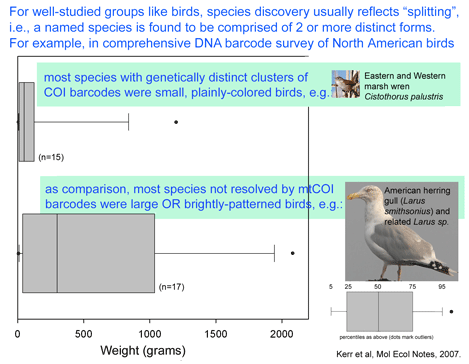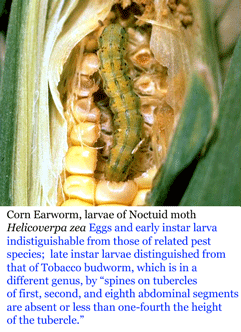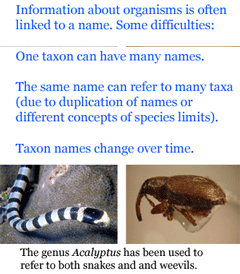Plants challenge DNA barcoding. It has been difficult to identify candidate barcode regions that amplify readily and also distinguish among closely-related species. In 7 February 2008 PNAS (open access) researchers from University of Johannesburg; University of Costa Rica; Royal Botanic Gardens, Kew; and Imperial College, London, analyze potential barcode regions on specimens collected in plant biodiversity hotspots in Kruger National Park, South Africa, and Costa Rica. They initially tested eight candidate regions identified in earlier studies (coding regions accD, rpoC1, rpoB, ndhJ, ycf5, and matK, and non-coding trnH-psbA). Amplification was done according to earlier studies except that a different set of matK primers was used which appeared to be more effective. All eight regions were examined in 101 specimens representing 32 species of trees, shrubs, and achlorophyllous parasites from South Africa, and on 71 specimens representing 48 species of Costa Rican orchids (in all, 44 species with 2-7 specimens per species, and 36 species with one sample). Based on their analysis, the coding region matK with the new primer set and the non-coding region trnH-psbA were >90% effective in species identification. For reasons I do not understand, the authors favor unweighted pair group method with arithmetic mean (UPGMA) for analyzing genetic clustering, although they tested neighbor-joining, maximum likelihood, maximum parsimony, and Bayesian methods. Given the presumed advantages of a coding region barcode (ease of alignment, greater higher-level phylogenetic signal), Lahaye et al propose 5′ region of plastid gene matK as a first-pass standard barcode for plants. 
The authors then analyzed the 5′ matK barcode in a much larger sample of orchids: 1,566 specimens representing 1,084 Mesoamerican species. It is exciting that this is the largest test of candidate barcode variation within species for plants to date. They report 212 genetic clusters in UPGMA tree, of which “86 fully matched previously recognized species and a further 25 partially matched taxonomic species…an examination of these clusters reveals cryptic species, which need further taxonomic work”. I am unsure from this short report what “partially matched taxonomic species” are and how many possible cryptic species were identified. I look forward to a more detailed report on the DNA barcodes, morphology, and range distribution of this very large sample of Mesoamerican orchids. A DNA-based method for identifying non-flowering orchids and other plants could help protect many threatened species.
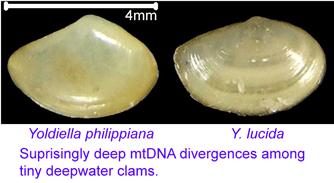 mtDNA differences among these bivalves are remarkably large, even among species in the same genus. The differences among congeneric species in this sample (average 22%, range 12-42%) are larger than differences among entire class Aves (according to my analysis with BOLD software, COI differences among birds in different orders, such as penguins and hummingbirds for example, average 20%, with range 14-28%).
mtDNA differences among these bivalves are remarkably large, even among species in the same genus. The differences among congeneric species in this sample (average 22%, range 12-42%) are larger than differences among entire class Aves (according to my analysis with BOLD software, COI differences among birds in different orders, such as penguins and hummingbirds for example, average 20%, with range 14-28%).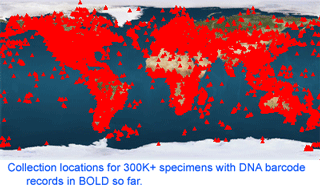 As of 28 january 2008, there are 341,825 barcode records from 35,798 species in the Barcode of Life Database (BOLD)
As of 28 january 2008, there are 341,825 barcode records from 35,798 species in the Barcode of Life Database (BOLD) 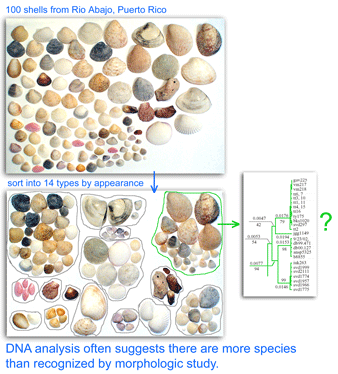 One result is that it has been difficult to compare patterns of diversification between different branches in the Tree. One might ask, how finely and how evenly divided is biodiversity? Are the differences among and within mosquito species (3,400 species), for example, similar to the differences among and within fruit flies (6,200 species) or birds (10,000 species)? Broad application of DNA analysis is beginning to provide some insights. To enable these sorts of comparisons, a standardized locus is needed, as unique genes can solve local branching patterns, but do not allow easy comparisons between branches.
One result is that it has been difficult to compare patterns of diversification between different branches in the Tree. One might ask, how finely and how evenly divided is biodiversity? Are the differences among and within mosquito species (3,400 species), for example, similar to the differences among and within fruit flies (6,200 species) or birds (10,000 species)? Broad application of DNA analysis is beginning to provide some insights. To enable these sorts of comparisons, a standardized locus is needed, as unique genes can solve local branching patterns, but do not allow easy comparisons between branches.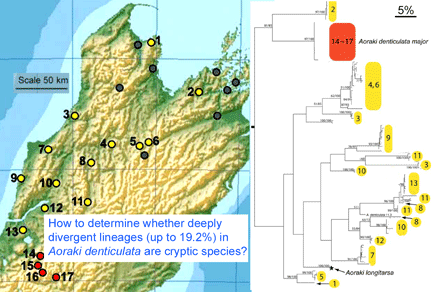
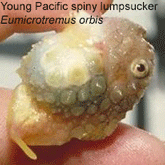 Lumpsuckers are globular, scaleless marine fish with bony tubercles on head and body, and a ventral sucking disc, derived from specialized pelvic fins, which allows them to adhere to environmental substrates. The genus Eumicrotremus comprises 16 species distributed in the Arctic and northern Atlantic and Pacific oceans; the commonest and most widespread in the north Atlantic is the Spiny lumpsucker E. spinosus, which was first described by Fabricius in 1776. A new subspecies E. s. eggvinii was described in 1956, based on a single specimen, and this was later elevated to species level “on the basis of wrinkled skin, numerous dermal warts and a large sucking disk, in addition to the low number of bony tubercles.”
Lumpsuckers are globular, scaleless marine fish with bony tubercles on head and body, and a ventral sucking disc, derived from specialized pelvic fins, which allows them to adhere to environmental substrates. The genus Eumicrotremus comprises 16 species distributed in the Arctic and northern Atlantic and Pacific oceans; the commonest and most widespread in the north Atlantic is the Spiny lumpsucker E. spinosus, which was first described by Fabricius in 1776. A new subspecies E. s. eggvinii was described in 1956, based on a single specimen, and this was later elevated to species level “on the basis of wrinkled skin, numerous dermal warts and a large sucking disk, in addition to the low number of bony tubercles.”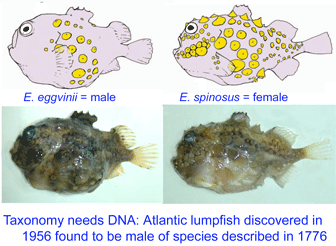 In August 2007
In August 2007  In 17 September 2007 Zootaxa (
In 17 September 2007 Zootaxa (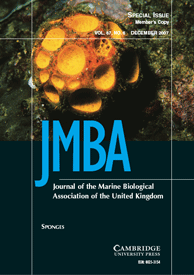 Sponges are difficult to identify and classify. Many sponges “have a depauperate suite of morphologic characters and/or are plagued by morphological homoplasies” and vary according to environmental conditions, challenging identification at species level and stymying attempts to reconstruct evolutionary lineages. In
Sponges are difficult to identify and classify. Many sponges “have a depauperate suite of morphologic characters and/or are plagued by morphological homoplasies” and vary according to environmental conditions, challenging identification at species level and stymying attempts to reconstruct evolutionary lineages. In 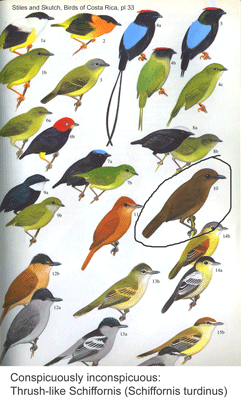 Birds are relatively large, conspicuous, vocal, and mostly diurnal creatures, making it relatively easy for humans to tell apart. Even so, new species continue to be discovered; these usually represent distinct forms within what were thought to be single species. In
Birds are relatively large, conspicuous, vocal, and mostly diurnal creatures, making it relatively easy for humans to tell apart. Even so, new species continue to be discovered; these usually represent distinct forms within what were thought to be single species. In 